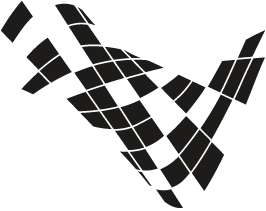Ramon is a Research Associate in the Dynamics Research Group, at the University of Sheffield, currently working on a project funded by the Engineering and Physical Sciences Research Council (EPSRC) on autonomous inspection for manufacturing and re-manufacturing, with an emphasis on composite structures. He graduated from a degree in Aerospace Engineering in 2012 and is currently completing a PhD in the use of Artificial Intelligence to monitor the integrity of structures in an operational environment. In the past, Ramon has worked in research projects with HBM-nCode, Leonardo (Agusta-Westland) Helicopters, Ricardo ltd and Kongsberg Maritime.
Outside of work, he enjoys building and flying model aircraft as well as gliding. He also enjoy surfing and snowboarding.
Research interests:
I have a varied range of research interests, within the remit of structural dynamics, signal processing, statistical inference and machine learning. One application of these fields that is of interest to me is Structural Health Monitoring (SHM), which combines knowledge from these, and other fields, to solve problems such as: is a structure operating within its normal condition? Has failure occurred? What is its residual life? My research has so far focused on (but is not limited to) aerospace and wind energy applications.
Current research:
Currently, I am working as a post-doctoral research associate in a project titled Autonomous Inspection of Manufacturing and Remanufacturing (AIMaReM), which aims to solve some aspects of automating the Non Destructive Evaluation (NDE) of engineering components. The focus is on inspection of components where damage may not be easy to visualise in routine inspections, such as carbon fibre reinforced plastics. This is can be applied to parts such as wing panels and other critical aerospace components. Advanced NDE techniques are required in this case. One such technique is ultrasound scanning, which can detect defects hidden under the surface. A problem with this technique is that it is hard to make use of the vast amount of information collected from these structures due to the sheer quantity of data acquired. To solve this, I am investigation the use of Compressive Sensing (CS), a novel mathematical framework for sampling signals where sparsity in some domain (for example, frequency or wavelet) can be exploited. This is an exciting piece of work as not a lot has been done with CS in the context of SHM and NDE.
Apart from my core research job, I have various separate research interest. One of the big unsolved problems in SHM is that of damage prognostics. This deals specifically with the question: once we have detected damage, how much longer can this structure be operated safely? This is interesting because it combines various aspects of engineering, physics and mathematics. To solve this problem, tools such as ultrasound and Acoustic Emission (AE) can be used to gather detailed information about the dynamic response of the structure. From here, a combination of statistical inference with the physics of the degradation process are required to solve this problem. I have a particular interest in developing the decision-making side of SHM, which has been relatively unexplored.
Other areas of research I try to keep active in include:
- Indirect estimation of structural loads from system parameters
- Nonlinear system identification,
- Vibration, ultrasound and acoustic emission testing
- Probabilistic graphical models
Below, the plot on the left shows a single ultrasound pulse, while the right plot shows the time evolution of a series of these pulses, acquired live during an automated carbon fibre tape laying process These were then used as features in a statistical inference algorithm that could characterise this evolving features and detect defects during this process.

The plot below shows the detection of various levels of damage on a wind turbine bearing, using features gathered from Acoustic Emission measurements. The particularly interesting thing here is the detection of subsurface damage, which is hard and before this not possible to detect in a practical setting

This is a YouTube link to an installation we carried out of an Acoustic Emission and vibration measurement system on a 2MW turbine in Norway!.
Publications
-
R. Fuentes, E.J. Cross, N. Ray, N. Dervilis, T. Guo, K. Worden, In-process monitoring of automated carbon fibre tape layup using ultrasonic guided waves, International Modal Analysis Conference (IMAC), 2017.
-
R. Fuentes, E.J. Cross, M. B. Marshall, T. Howard, R. Dwyer-Joyce, Observations of Acustic Emissions from a line contact compressed into the plastic region , Institution of Mechanical Engineers, Part J, 2015
-
R. Fuentes, E.J. Cross, M. B. Marshall, T. Huntley, R. Harald-Hestmo, R. Dwyer-Joyce Detecting Damage in Wind Turbine Bearings using Acoustic Emission and Gaussian Process Latent Variable Models, International Conference in Structural Health Monitoring (IWSHM), 2015
-
R. Fuentes, E.J. Cross, A. Halfpenny, K. Worden, R.J. Barthorpe, Autoregressive Gaussian Process Regression for Structural Damage Detection. International Conference in Noise and Vibration Engineering (ISMA) 2014
-
R. Fuentes, E.J. Cross, A. Halfpenny, K.Worden, R.J. Barthorpe, “Aircraft parametric structural load monitoring using Gaussian Process Regression”, European Workshop in Structural Health Monitoring (EWSHM) 2014
-
R. Fuentes, A. Halfpenny, R.J. Barthorpe, E. J. Cross, K. Worden, “An approach to fault detection using a unified linear Gaussian framework.”, International Workshop in Structural Health Monitoring (IWSHM )2013.
-
R. Fuentes, T. Walton, “Order filtering of rotating machinery operational response data using wavelet packet decomposition and resampling techniques”, International Operational Modal Analysis Conference (IOMAC) 2013

